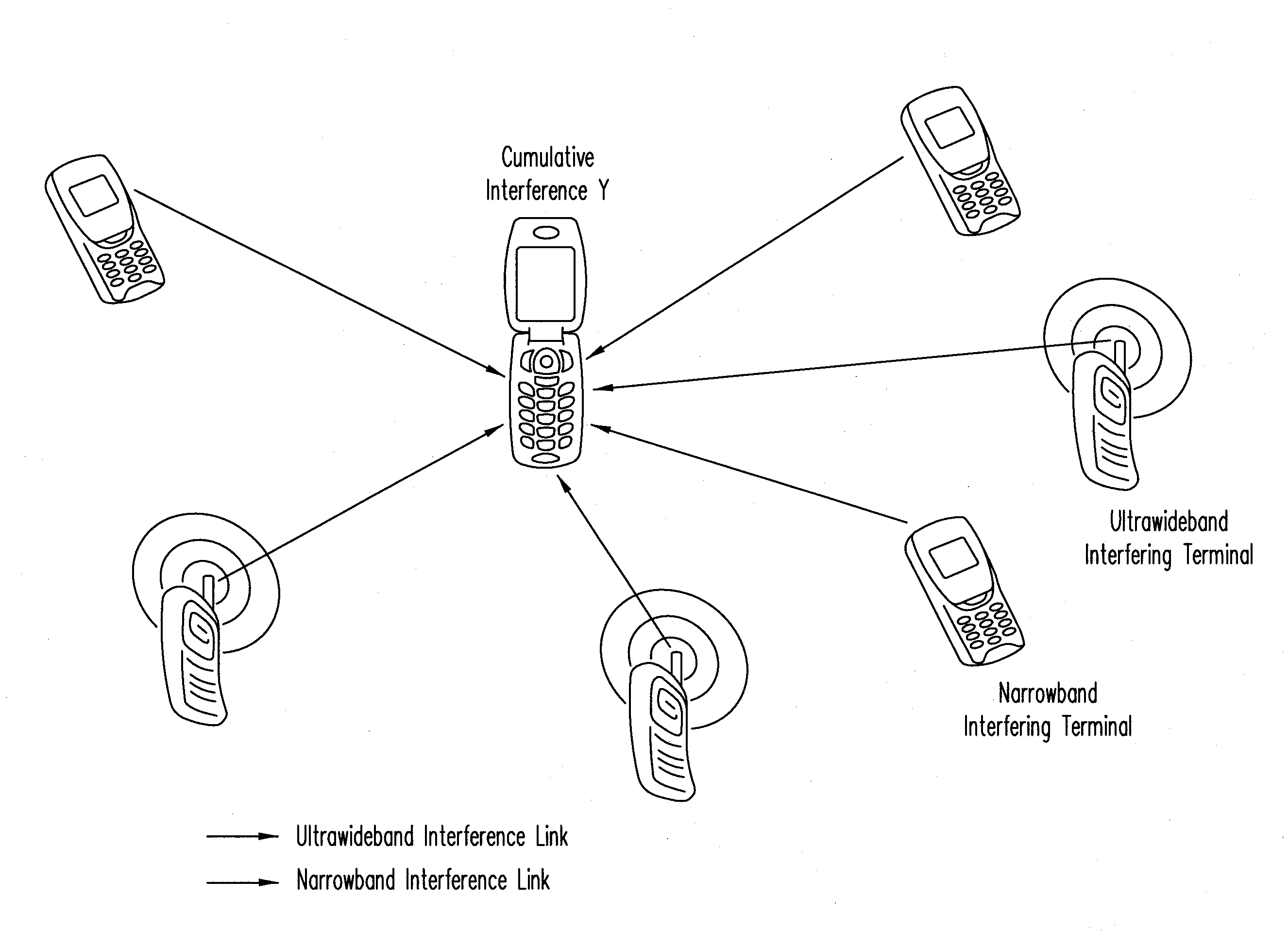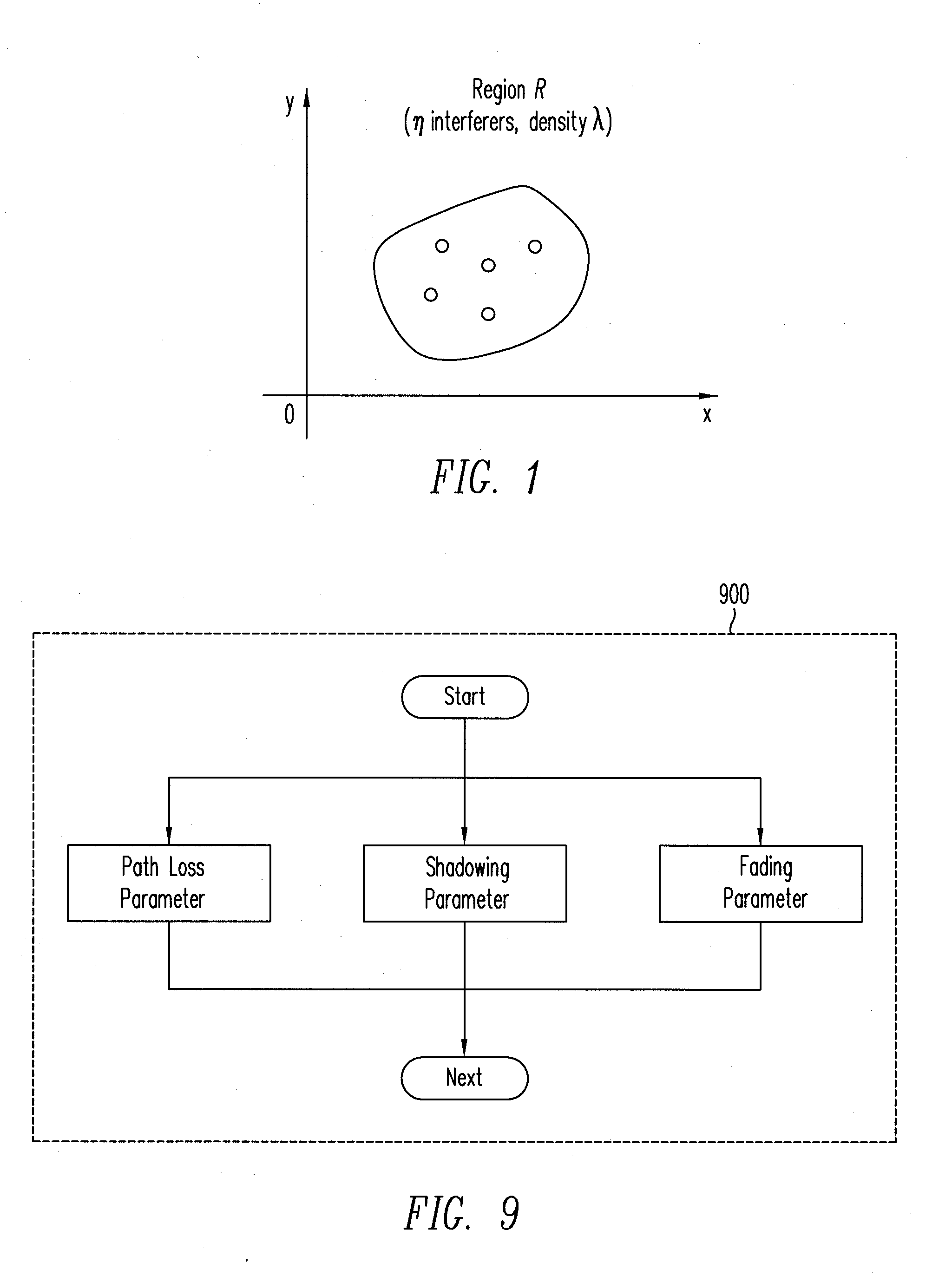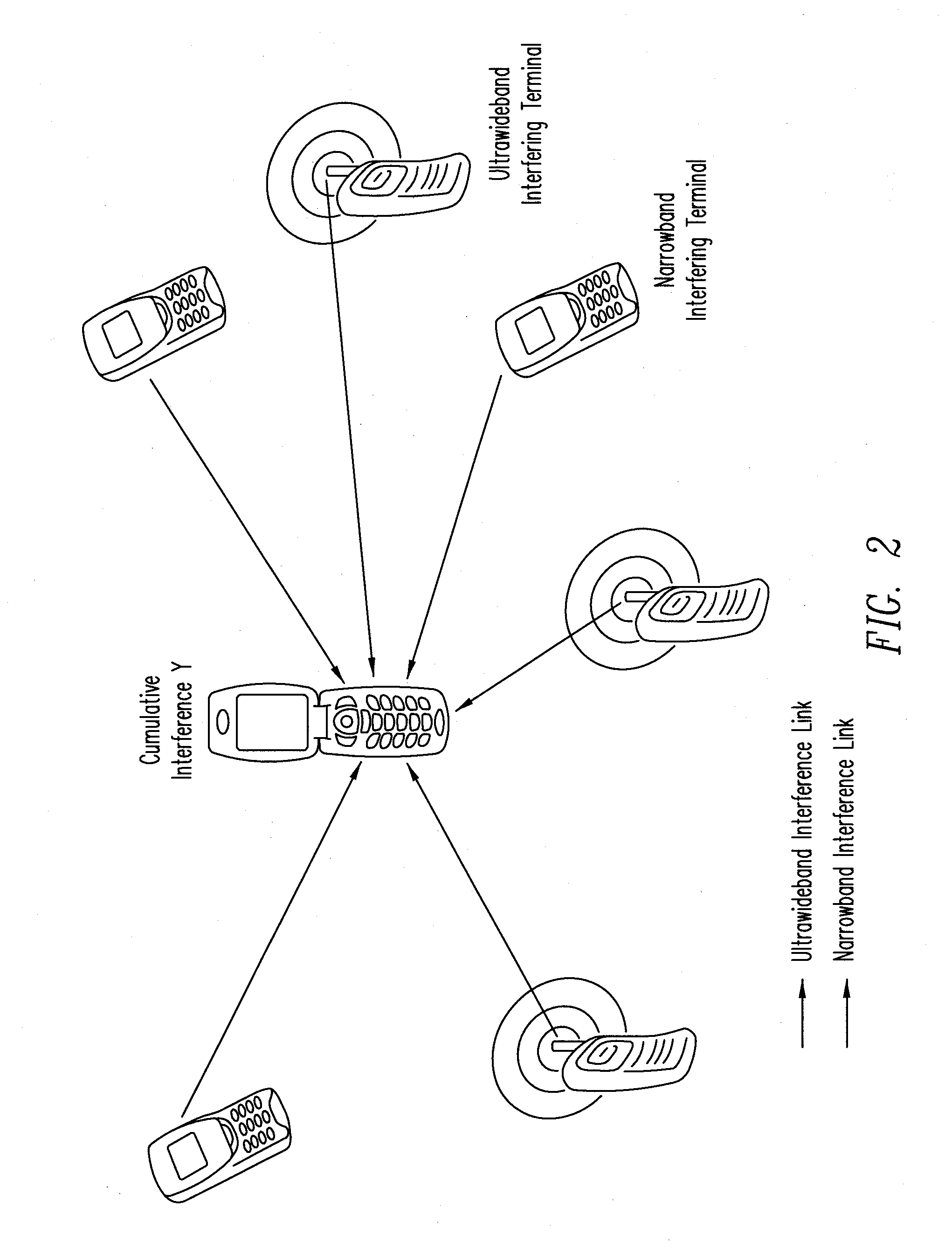Method and system for wireless design subject to interference constraints
- Summary
- Abstract
- Description
- Claims
- Application Information
AI Technical Summary
Benefits of technology
Problems solved by technology
Method used
Image
Examples
Embodiment Construction
[0026]FIG. 1 illustrates a spatial distribution of transmitters in a network design framework, according to one embodiment of the present invention. As shown in FIG. 1, for example, the transmitters are distributed spatially according to a homogeneous Poisson point process in a 2-dimensional (2-D) infinite plane. Consequently, the probability of finding n interferers inside a given region R (not necessarily connected) depends only on the total area A of the region, and is given by:
P{ninR}=(λA)nn!-λA,(1)
[0027]where λ is a (constant) spatial density of interfering nodes, expressed in nodes per unit area. Under this model, the interfering nodes form a set of terminals that transmit within the frequency band of interest and during the time interval of interest (e.g., one symbol period). These interfering nodes therefore effectively contribute to the total interference. Regardless of the network topology (e.g., unicast, multicast, broadcast, etc.) or the multiple-access technique used (e...
PUM
 Login to View More
Login to View More Abstract
Description
Claims
Application Information
 Login to View More
Login to View More - R&D
- Intellectual Property
- Life Sciences
- Materials
- Tech Scout
- Unparalleled Data Quality
- Higher Quality Content
- 60% Fewer Hallucinations
Browse by: Latest US Patents, China's latest patents, Technical Efficacy Thesaurus, Application Domain, Technology Topic, Popular Technical Reports.
© 2025 PatSnap. All rights reserved.Legal|Privacy policy|Modern Slavery Act Transparency Statement|Sitemap|About US| Contact US: help@patsnap.com



